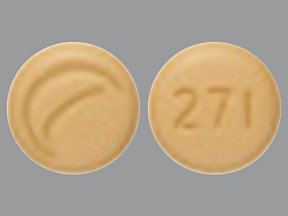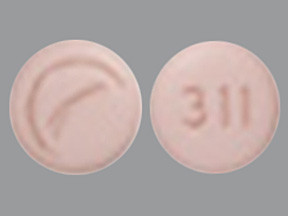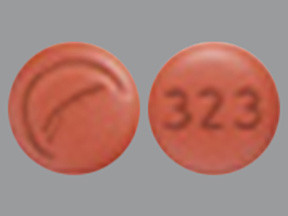MORPHINE EXTENDED-RELEASE TABLET - ORAL
PHONETIC PRONUNCIATION: (MOR-feen SUL-fate)
COMMON BRAND NAME(S): MS Contin
GENERIC NAME(S): morphine sulfate
Uses
USES: This medication is used to help relieve severe ongoing pain (such as due to cancer). Morphine belongs to a class of drugs known as opioid (narcotic) analgesics. It works in the brain to change how your body feels and responds to pain. The higher strengths of this drug (100 milligrams or more per tablet) should be used only if you have been regularly taking moderate to large amounts of opioid pain medications. These strengths may cause overdose (even death) if taken by a person who has not been regularly taking opioids. Do not use the extended-release form of morphine to relieve pain that is mild or that will go away in a few days. This medication is not for occasional ("as needed") use.
How to use MORPHINE EXTENDED-RELEASE TABLET - ORAL
HOW TO USE: See also Warning section. Read the Medication Guide provided by your pharmacist before you start using morphine and each time you get a refill. If you have any questions, ask your doctor or pharmacist. Take this medication on a regular schedule as directed by your doctor, not as needed for sudden (breakthrough) pain. Take this drug with or without food as directed by your doctor, usually every 8 hours or 12 hours. Some brands should only be taken every 12 hours. If you have nausea, it may help to take this drug with food. Ask your doctor or pharmacist about other ways to decrease nausea (such as lying down for 1 to 2 hours with as little head movement as possible). If nausea persists, see your doctor. Swallow the tablets whole. Do not break, crush, chew, or dissolve the tablet. Doing so can release all of the drug at once, increasing the risk of morphine overdose. The dosage is based on your medical condition and response to treatment. Do not increase your dose or use this drug more often or for longer than prescribed, because your risk of side effects may increase. Properly stop the medication when so directed. Before you start taking this medication, ask your doctor or pharmacist if you should stop or change how you use your other opioid medication(s). Other pain relievers (such as acetaminophen, ibuprofen) may also be prescribed. Ask your doctor or pharmacist about using morphine safely with other drugs. If you suddenly stop using this medication, you may have withdrawal symptoms (such as restlessness, watering eyes, runny nose, nausea, sweating, muscle aches). To help prevent withdrawal, your doctor may lower your dose slowly. Withdrawal is more likely if you have used morphine for a long time or in high doses. Tell your doctor or pharmacist right away if you have withdrawal. When this medication is used for a long time, it may not work as well. Talk with your doctor if this medication stops working well. Though it helps many people, this medication may sometimes cause addiction. This risk may be higher if you have a substance use disorder (such as overuse of or addiction to drugs/alcohol). Take this medication exactly as prescribed to lower the risk of addiction. Ask your doctor or pharmacist for more details. Tell your doctor if your pain lasts or gets worse.
Side Effects
Precautions
Interactions
Overdose
Images

- color
- white
- shape
- round
- imprint
- logo, 270

- color
- yellow
- shape
- round
- imprint
- logo, 271

- color
- pink
- shape
- round
- imprint
- logo, 311

- color
- red
- shape
- round
- imprint
- logo, 323

- color
- red
- shape
- oblong
- imprint
- logo, 347

- color
- light blue
- shape
- round
- imprint
- M, MS 15

- color
- purple
- shape
- round
- imprint
- M, MS 30

- color
- peach
- shape
- round
- imprint
- M, MS 60

- color
- gray
- shape
- round
- imprint
- M, MS 100
Reviews
Faq for MORPHINE EXTENDED-RELEASE TABLET - ORAL
Morphine Extended-Release Tablet is used to relieve severe ongoing pain when other pain medications are not enough.
Take this medication by mouth as directed by your doctor, usually once daily. Swallow the tablets whole, do not crush or chew them.
The common side effects may include constipation, nausea, dizziness, drowsiness, and sweating. Inform your doctor if any of these persist or worsen.
The extended-release tablets are designed to provide pain relief for about 12-24 hours after taking a dose. However, the onset of action may vary among individuals.
It is not recommended to consume alcohol while taking Morphine Extended-Release Tablet as it may increase the risk of side effects such as severe drowsiness and respiratory depression.
Morphine may interact with certain medications such as other opioids, sedatives, tranquilizers, muscle relaxants, and certain antidepressants. It is crucial to inform your doctor about all the medications you are taking to avoid potential drug interactions.
No, you should not stop taking Morphine Extended-Release Tablet suddenly without consulting your doctor. It is important to gradually reduce the dosage under medical supervision to avoid withdrawal symptoms.
Some precautions to follow include avoiding driving or operating heavy machinery while taking this medication, informing your healthcare provider of your medical history, using it cautiously in the elderly and debilitated patients, and storing it securely away from children and pets.
If you miss a dose, take it as soon as you remember. However, if it is close to the next scheduled dose, skip the missed dose and resume your regular dosing schedule. Do not double the dose to catch up.
Warning
WARNING: Morphine has a risk for abuse and addiction, which can lead to overdose and death. Morphine may also cause severe, possibly fatal, breathing problems. To lower your risk, your doctor should have you take the smallest dose of morphine that works, and take it for the shortest possible time. See also How to Use section for more information about addiction. The risk for severe breathing problems is higher when you start this medication and after a dose increase, or if you take the wrong dose/strength. Taking this medication with alcohol or other drugs that can cause drowsiness or breathing problems may cause very serious side effects, including death. Be sure you know how to take morphine and what other drugs you should avoid taking with it. See also Drug Interactions section. Get medical help right away if any of these very serious side effects occur: slow/shallow breathing, unusual lightheadedness, severe drowsiness/dizziness, difficulty waking up. Do not break, crush, chew, or dissolve this medication. Taking broken, crushed, chewed, or dissolved forms of extended-release morphine could cause a fatal overdose. Keep this medicine in a safe place to prevent theft, misuse, or abuse. If someone accidentally swallows this drug, get medical help right away. Before using this medication, women of childbearing age should talk with their doctor(s) about the risks and benefits. Tell your doctor if you are pregnant or if you plan to become pregnant. During pregnancy, this medication should be used only when clearly needed. It may slightly increase the risk of birth defects if used during the first two months of pregnancy. Also, using it for a long time or in high doses near the expected delivery date may harm the unborn baby. To lessen the risk, take the smallest effective dose for the shortest possible time. Babies born to mothers who use this drug for a long time may develop severe (possibly fatal) withdrawal symptoms. Tell the doctor right away if you notice any symptoms in your newborn baby such as crying that doesn't stop, slow/shallow breathing, irritability, shaking, vomiting, diarrhea, poor feeding, or difficulty gaining weight.
Disclaimer
IMPORTANT: HOW TO USE THIS INFORMATION: This is a summary and does NOT have all possible information about this product. This information does not assure that this product is safe, effective, or appropriate for you. This information is not individual medical advice and does not substitute for the advice of your health care professional. Always ask your health care professional for complete information about this product and your specific health needs.
No Reviews Yet